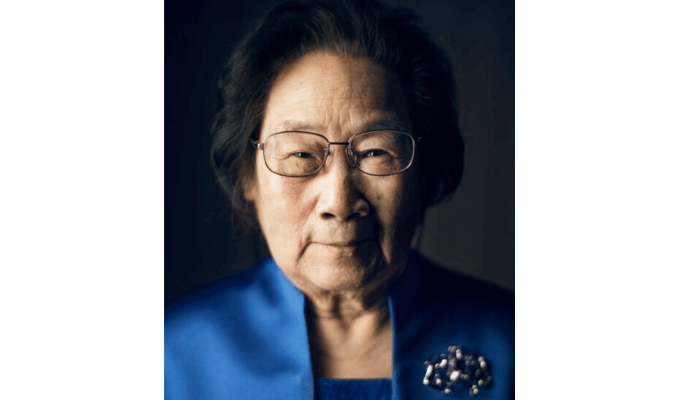Meet Tu Youyou, Chinese Nobel laureate who found a cure for malaria
When Tu Youyou set out to find a cure for malaria more than half a century ago, she had no modern laboratories, no advanced funding, and no international training. Yet her perseverance — guided by centuries-old Chinese medical wisdom — led to the discovery of artemisinin, a compound that has saved millions of lives and earned her the 2015 Nobel Prize in Physiology or Medicine.
Tu, then 84, was one of three scientists honoured for their work on treatments for parasitic diseases. The prize totalled eight million Swedish kronor (about $920,000), with Tu receiving half. The remaining half went to Irish biochemist William C. Campbell and Japanese microbiologist Satoshi Ōmura. Tu’s share of the prize symbolised something far larger — the triumph of perseverance, curiosity, and the fusion of traditional Chinese medicine with modern science.
Read also: Chemistry Nobel prize 2025 awarded to trio for groundbreaking work on metal-organic frameworks
A discovery born from crisis
The story began decades earlier. In the late 1960s, during the Vietnam War, malaria was killing thousands of soldiers in the jungles of Southeast Asia. The parasite had grown resistant to chloroquine, then the most widely used drug. In 1967, China’s Chairman Mao Zedong launched a secret military project — known as Project 523 — to find a new cure.

Tu, a 39-year-old researcher at the Academy of Traditional Chinese Medicine in Beijing, was appointed to lead one of the research teams. The assignment came with great personal sacrifice. She left her two young daughters in the care of her parents for several years while she travelled to Hainan Island, then battling its own malaria outbreak, to study the disease in real conditions.
“The work was the top priority,” she later said. “I was certainly willing to sacrifice my personal life.”
learning from the ancients
Faced with limited resources and growing frustration, Tu turned to an unlikely source: classical Chinese medical texts. Among them was A Handbook of Prescriptions for Emergencies, written in the fourth century. It mentioned that the herb qinghao (sweet wormwood) could ease symptoms of “intermittent fevers” — a hallmark of malaria.

Her initial extractions failed, until she noticed that the ancient recipe called for soaking the plant rather than boiling it. High heat, she reasoned, might destroy the active ingredient. She tried again, using a lower-temperature ether-based solvent. This time, it worked.
Read also: Nobel Prize in Physics 2025 awarded to trio for quantum mechanics discoveries
Tests on mice and monkeys showed 100 per cent effectiveness. In 1971, Tu and two colleagues volunteered to take the first doses themselves. When the compound was later tested on malaria patients in Hainan, every one of them recovered.
The active substance — artemisinin — had been found.
From local experiment to global cure
It took years for the international community to recognise the breakthrough. Tu’s findings were first published in Chinese, and it was not until 1979 that they appeared in English. But by the 1980s, the World Health Organisation (WHO), the World Bank, and the United Nations were inviting Tu to present her results.
By the early 2000s, artemisinin-based combination therapies had become the global standard for malaria treatment. The WHO lists artemisinin and related drugs among its essential medicines, and the compound is credited with saving millions of lives across Africa and Asia.

Jan Andersson, a member of the Nobel Committee, said at the time that Tu’s work “opened a new window for researchers” by uniting traditional knowledge and modern science. “She combined Eastern and Western medicine to achieve an effect where one plus one is greater than two,” he said.
Humble scientist, historic legacy
Tu ’s journey was anything but conventional. Born in 1930 in Ningbo, eastern China, she studied pharmacology at Beijing Medical College and later trained in traditional medicine. She never earned a doctorate, nor did she study abroad — a rarity among Nobel laureates. But her ability to bridge two worlds made her stand out.
In 2011, she received the prestigious Lasker Clinical Medical Research Award, often called “America’s Nobel”, for what the Lasker Foundation described as “arguably the most important pharmaceutical intervention in the last half-century”.
Read also: Immune system breakthrough wins 2025 Nobel medicine prize for US, Japan scientists
Despite the accolades, Tu has remained modest. “I do not want fame,” she once said, choosing instead to share credit with her colleagues and the generations of scholars who built China’s medical tradition. When she delivered her Nobel lecture, titled Discovery of Artemisinin: A Gift from Traditional Chinese Medicine to the World, she described her work not as a personal triumph but as a contribution from China to humanity.
Still leading at 95
Now aged 95, Tu continues her research as head and chief professor at the Artemisinin Research Centre of the Chinese Academy of Chinese Medical Sciences. In 2025, she was elected an international member of the US National Academy of Sciences — another rare honour for a mainland Chinese scientist.
Tu remains convinced that ancient Chinese medicine still holds untapped potential. “Chinese medicine will help us conquer life-threatening diseases worldwide,” she once said. “People across the globe will enjoy its benefits for health promotion.”
Tu’s discovery was more than a medical milestone; it was a cultural and scientific bridge between past and present, East and West. From yellowed pages of a fourth-century text, she uncovered a molecule that would reshape modern medicine.
Every scientist dreams of doing something that can help the world. Tu, against all odds, did exactly that.

